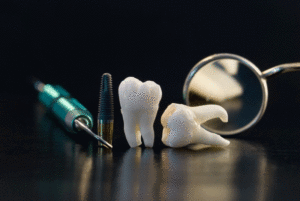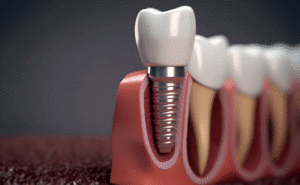While the end results may look the same cosmetically, the actual procedures used in restorations involving dental bonding and crowns are actually quite different. So, too, are the conditions which determine when one approach is called for over the other.
Which Factors Help Determine If Dental Bonding is Best?
Typically, Dr. Caven will recommend bonding for restorations that are more cosmetic in nature, like filling in excessive spacing between teeth or repairing superficial cracks. It can also be used to lengthen small or misshapen teeth and to whiten teeth that may have become stained or discolored by substances like coffee or tetracyclene. Bonding is more frequently done on repairs to the teeth located in the front of the mouth, the incisors, than those in the back, the molars. Since the surface area of the incisors is more vertical than horizontal, damage is usually isolated to that portion of the tooth without compromising the underlying bone and root structure. The front teeth are also less prone to excessive wear and tear than are molars, which are more subjected to the rigors of chewing than are the incisors, so materials used in rebuilding and repairing chips and gaps in this area can be more forgiving.
More often than not, bonding can be done in a single office visit. Dr. Caven preps the tooth and/or teeth to be restored first by roughening and then conditioning the affected area(s) to ensure proper adhesion of the requisite composite material. Next, he will apply and sculpt the resin to match the desired shape before hardening it with a harmless, high intensity hand-held light.
When Does a Crown Make More Sense?
Thanks to advances in modern technology, some crowns can also be delivered in just one visit. Dr. Caven now specializes in CEREC, short for Ceramic Reconstruction, a patented, high-precision procedure in addition to traditional porcelain crowns. Unlike ceramic crowns, which have to be sent to an outside lab, the CEREC system is a combination of high-definition CAD-CAM imaging with in-house milling, all done right within Dr. Caven’s office. There are several factors that will help you and Dr. Caven determine which approach is best for you in light of your individual circumstances and needs. In either case, crowns are made to fit on top of your teeth. They can be used as an alternative to fillings in more involved cases that require portions of the tooth to be removed or to restore a tooth’s function and appearance following a restorative procedure such as a root canal.
Because a crown covers your tooth completely it protects the remaining portion of your underlying natural tooth, and Dr. Caven will ensure that it fits as snugly as possible at the gum line. While crowns can also be used on front teeth to an equal or greater effect and result as bonding, the reverse – using bonding on back teeth – is not as effective or common due to the more substantial demands placed on the molars than the incisors. For this reason, crowns are typically the more preferred regimen even in cases involving molars that are more cosmetic in nature, like covering stained or discolored teeth.
Which Approach Is Right For You?
While we hope this cursory overview of some of the differences between bonding and crowns has been helpful to you, the best way to determine which is right for you, personally, is to come in and discuss your individual dental concern or complaint with Dr. Caven. Then, he can present those options which make the most sense for you given the location, severity, and desired outcome around your own schedule, budget, and other potential constraints.


